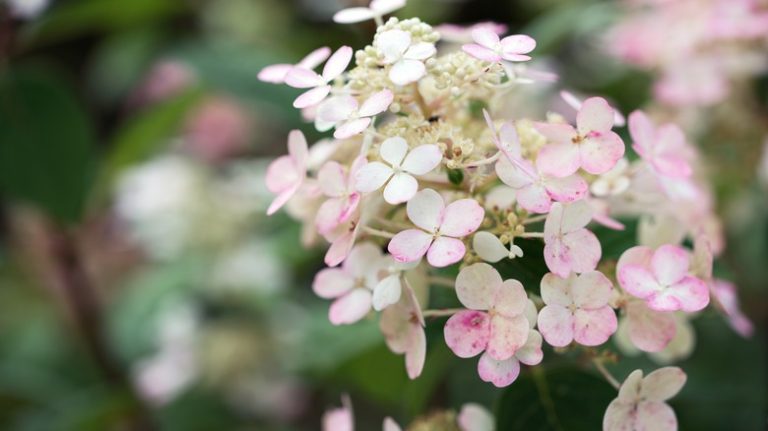The 403 error is an HTTP status code that indicates a “Forbidden” response from the server to your request. It is a common error encountered when trying to access a webpage or resource that you do not have permission to view. Although it can be frustrating, understanding the cause and taking the appropriate steps can help resolve the issue.
When you encounter a 403 error, it means that the server has understood your request, but is refusing to fulfill it. This could be due to various reasons, such as incorrect permissions, authentication issues, or blocked IP addresses. The server is essentially telling you that you are not allowed to access the requested resource.
To resolve a 403 error, it’s important to first identify the cause. It may be as simple as entering the wrong login credentials or accessing a webpage that requires a subscription. In such cases, double-checking your credentials or subscribing to the service should give you the access you need.
If you are encountering a 403 error on your own website, there are several steps you can take to resolve it. First, check the file permissions on your server to ensure they are set correctly. You may need to give certain files or directories the appropriate permissions to be accessed by users. Additionally, make sure that any specific tools or plugins you are using are up to date and not causing any conflicts or blocking access.
Another common cause of a 403 error is the presence of a “.htaccess” file on your server. This file can be used to control access to your web server directories. In some cases, it may be necessary to modify or remove this file to resolve the error.
In conclusion, the 403 error can be frustrating to encounter, but with a little TLC and an understanding of what causes it, you can often resolve the issue without too much trouble. Whether you’re removing deadheads from your peony flowers or troubleshooting your website, eliminating the cause of the error can help you enjoy the full splendor of what you’re looking for.
The Benefits Of Deadheading Peonies: Why You Should Give This Flower Its Much-Needed Tlc
Peonies are cherished for their beauty and elegance. These stunning flowers can add a touch of splendor to any garden or floral arrangement. However, like any living thing, they require care and maintenance to thrive and reach their full potential.
One essential step in peony care is deadheading. Deadheading is the process of removing spent or faded flowers from the plants. This simple task may not seem important, but it brings many benefits to peonies, including improved health, better blooming, and a longer-lasting season of beauty.
When peonies are allowed to form seed heads, valuable energy is diverted from the formation of new buds and blooms. The plant’s resources are focused on seed formation rather than creating fresh blossoms. By removing these seed heads, you encourage the peony to redirect its energy towards new growth and flower production.
Another reason to deadhead peonies is to eliminate diseased or damaged flowers. If left to wither on the plant, these weak or infected blooms can attract pests or diseases and spread to the healthy parts of the plant. By promptly removing these compromised flowers, you help keep your peony plant healthier and less susceptible to problems.
Deadheading also improves the overall appearance of the peony plant. As the flowers fade, they often turn brown or start to wilt. Leaving these unsightly blooms on the plant can mar the beauty of the entire flower bed. By removing these spent flowers, you maintain the pleasing aesthetic of your garden.
So, how do you deadhead peonies? The process is quite simple. As soon as a peony flower begins to fade, use a pair of sharp garden shears or scissors to cut the stem just above the first set of healthy leaves or branches. By cutting the stem at this point, you ensure that the plant’s energy is not wasted on producing seeds or weak, fading flowers.
If you have intersectional peonies (also known as Itoh peonies), the deadheading method is slightly different. Since these peonies produce flowers on lateral stems instead of the main stem, you should remove the entire stem that held the faded flower, not just the individual blooms.
Deadheading peonies should be done throughout the blooming season, as soon as the flowers begin to fade. By being diligent about this process, you can extend the blooming season and continue to enjoy the beauty of your peonies for many years to come.
In conclusion, deadheading peonies is a simple yet essential maintenance task that can have a significant impact on the health and appearance of your beloved flowers. By removing spent flowers, you redirect the plant’s energy towards new growth and better blooming, eliminate diseased or weakened blooms, and maintain the overall beauty of your garden. So, take the time to give your peonies the TLC they deserve, and you will be rewarded with a garden full of healthy, vibrant flowers for years to come.
What You’ll Learn
In this article, you’ll learn about the benefits of deadheading your flower garden, how to do it properly, and the tools you’ll need. Deadheading is an important step in flower maintenance that helps promote continuous blooming and keeps your garden looking its best.
Deadheading is the process of removing spent flower heads from your plants. By cutting off the dead blooms, you encourage the plant to produce new flowers and prevent it from wasting energy on seed production. This simple task can greatly extend the blooming season of your garden and keep your flowers looking fresh and pleasing to the eye.
When deadheading, it’s important to know the intersectional points where the spent flower meets the stem. By making a clean cut at this intersection, you’ll help the plant heal faster and force it to produce more blooms. Be sure to use sharp and clean pruners or scissors for the job to avoid damaging the plant.
Deadheading is especially beneficial for flower varieties such as peonies and brown-eyed Susans. These plants have stronger stems and can benefit from having their spent blooms removed. On the other hand, weak-stemmed plants like irises and poppies may not need deadheading as much, as their stems may break easily.
If you’re unsure whether a flower needs deadheading, a general rule of thumb is to check if the base of the flower is still alive and producing new buds. If it is, leave the flower alone. If the base is wilting or the flower has turned brown and is no longer producing new buds, it’s time to deadhead.
Deadheading is not the same as seed saving. If you’re looking to save seeds from your flowers, you’ll need to let the blooms go through their natural life cycle and wait until they start producing seed pods. Deadheading removes the spent blooms before they have a chance to produce seeds.
In addition to promoting continuous blooming, deadheading also helps to keep your garden healthier by removing potential homes for pests and diseases. By removing the spent flowers, you’re eliminating places where pests can lay their eggs or diseases can take hold. It’s a simple step that can greatly improve the overall health and appearance of your garden.
So, if you want your flower garden to be in its best shape and produce vibrant blooms, it’s time to give your plants a little TLC and start deadheading. By learning what to look for and how to do it, you can ensure that your flowers will continue to shine for years to come.
Now that you know what deadheading is and why it’s important, let’s move on to the next section where we’ll go over the step-by-step process of deadheading different types of flowers, including annuals, perennials, and intersectional hybrids.
What is the best time of year to deadhead peonies
When it comes to deadheading peonies, many gardeners have different opinions on the best time of year to do so. Deadheading is the process of removing faded or spent flower heads from plants, which encourages new blooms and helps to prolong the flowering season.
Peonies are a specific type of flower that benefit from deadheading. By removing the old blooms, the plant can focus its energy on forming new buds and not waste it on seed production. Deadheading also improves the overall appearance of the peony plant by eliminating the brown, wilted flowers.
The best time to deadhead peonies is after the flowering season in the summer. Once the blooms have faded and started to look brown or withered, it’s time to give them some TLC. The process is quite simple and can be done in a few easy steps.
- Start by identifying the flower heads that need to be removed. Look for ones that are brown, wilted, or diseased.
- Use a pair of clean and sharp garden shears or scissors to make a clean cut just above the junction where the stem meets the foliage.
- Dispose of the removed flower heads. If they are diseased, it’s important to not leave them in your garden as it can increase the risks of spreading the disease to other plants.
- Continue this deadheading process throughout the summer season as needed.
By deadheading peonies, you not only improve the overall appearance of the plant, but you also encourage more blooms for the next year. The process of deadheading peonies is a simple but important maintenance step that should be done to ensure the health and longevity of your plants.
So, if you’re looking to give your peonies some extra love and care, don’t forget to deadhead them after the flowering season in the summer. By following these specific steps, you’ll be helping your peonies thrive and ensuring beautiful blooms year after year.
403 ERROR




